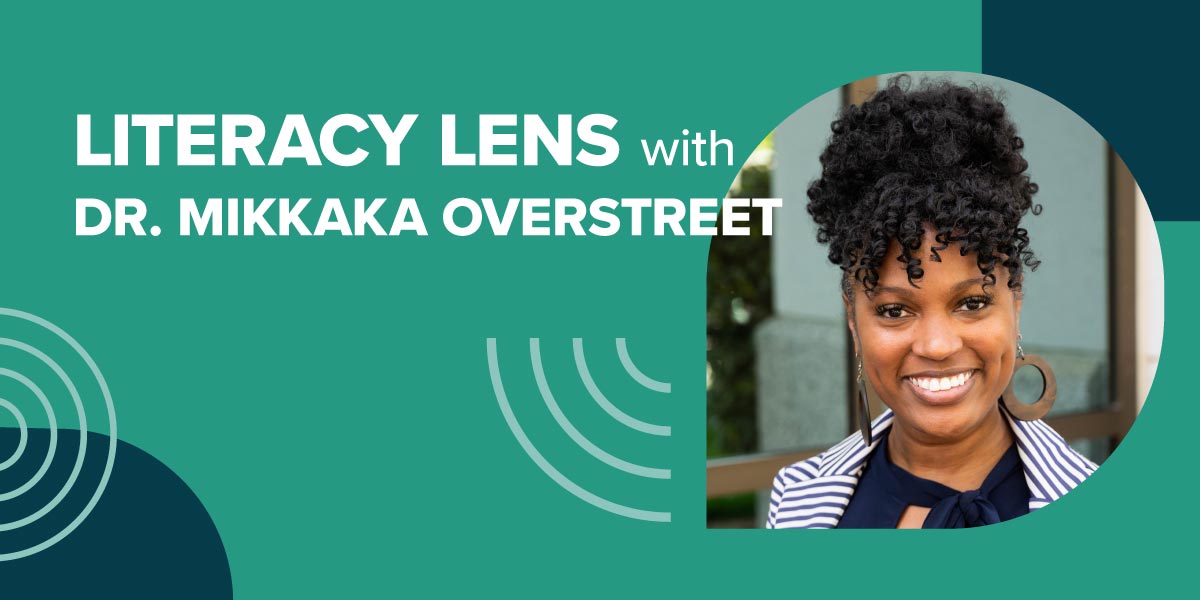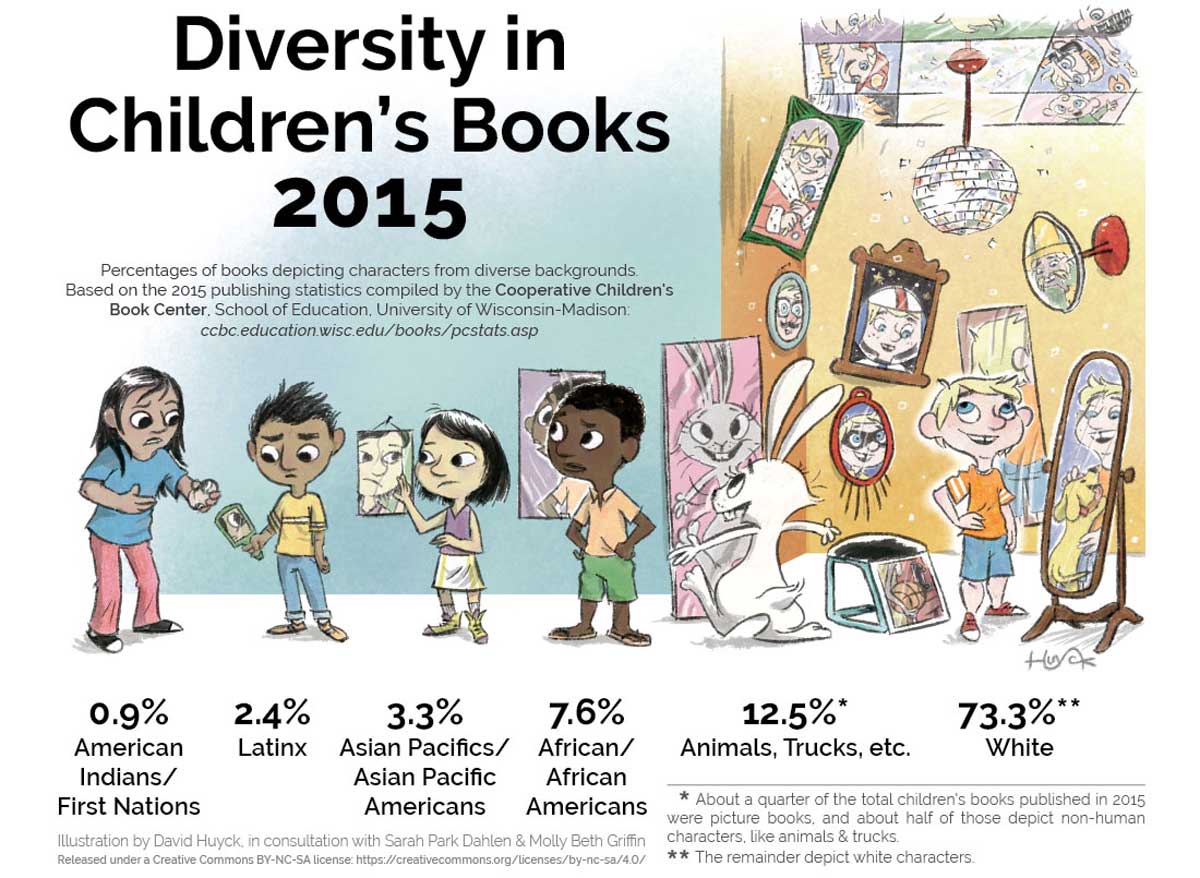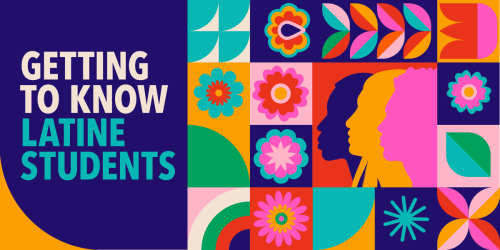Literacy Lens: The Gift of Inclusive Literature

This is the time of year when many people are buying gifts for friends, family members, teachers, and school staff members. Books are a wonderful gift at any time because there are so many choices—from fantasy to nonfiction to picture books to adventure stories from all over the world, there’s something for everyone.
Matching the right book to the right person is something I put a lot of thought into. When I was growing up, there weren’t many books I could see myself in or for me to learn more about people from diverse cultures. There weren’t a lot of books with accurate representation of identities that weren’t white, middle class, abled, Christian, heterosexual characters or animals that were anthropomorphized versions of that same norm.
While children’s literature has come a long way since I was a child, there is still a long way to go. Since 1985, the Cooperative Children’s Book Center at the University of Wisconsin-Madison has been collecting data on racial diversity in children’s literature. They’ve consistently found that, despite improvements in this area, racial diversity in children’s books has not kept pace with the racial diversity of the children consuming that literature. In fact, even four years after the student population in the United States officially became “majority-minority,” racially diverse characters still only made up 23 percent of the characters in children’s books.

Books as Windows, Mirrors, and Sliding Glass Doors
Children need to see themselves reflected in books and other classroom materials. They also need to learn about others. All children can benefit from access to a diverse and inclusive literature, including children from privileged and prominent groups.
Dr. Rudine Sims Bishop famously popularized the concept of books as windows and mirrors in a 1990 keynote address at the San Bernardino Reading Conference. According to Dr. Bishop,
Books are sometimes windows, offering views of worlds that may be real or imagined, familiar or strange. These windows are also sliding glass doors, and readers have only to walk through in imagination to become part of whatever world has been created and recreated by the author. When lighting conditions are just right, however, a window can also be a mirror. Literature transforms human experience and reflects it back to us, and in that reflection we can see our own lives and experiences as part of the larger human experience. Reading, then, becomes a means of self-affirmation, and readers often seek their mirrors in books...
Students from dominant social groups need to be able to look through the window of books to come to know people whose cultures are different from their own. If they only see reflections of themselves, they will grow up with an exaggerated view of their importance and value in the world—a dangerous ethnocentrism.
—Dr. Rudine Sims Bishop, “Windows and Mirrors: Children’s Books and Parallel Cultures”
What does a “dangerous ethnocentrism” look like? It looks like centuries of living in a society built for people that look like you. It looks like always being the norm. It looks like a world where you get second chances and the benefit of the doubt when others don’t. It looks like a room where every window is actually a mirror, giving your own image back to you, again and again.
As the United States becomes more diverse, some people in the former majority may feel as if they are being silenced simply because they’re not the only voice being heard anymore. This ethnocentrism and lack of empathy can have truly harmful effects—on individuals, families, communities, and society as a whole. The gift of inclusive literature can counteract that danger.
Preparing Students to Thrive in a Diverse World
In the 30 years since her keynote address, Dr. Bishop’s concept of books as mirrors and windows has become an accepted truth for many teachers, reading coaches, librarians, and literacy experts. Despite her emphasis on giving every child access to both kinds of books, however, much of the current cultural discussion has focused on “mirror books” for minoritized populations.
In this false narrative, public schools and public libraries are somehow “overdoing diversity” by filling their shelves with books and other materials that emphasize the representation of previously marginalized groups, while pushing representation of the dominant culture off the shelf entirely.
Beyond the fact that this is simply not true, as the data from the Cooperative Children’s Book Center has already shown, this either/or proposition—in which increased representation for one group must result in decreased representation for another group—is itself a form of dangerous ethnocentrism. It is the opposite of a diverse and inclusive literature, classroom, or culture. If followed to its logical extreme, it leaves us all in windowless rooms.
In a culture that values diversity, representation is not an either/or proposition. In this view, one child’s mirror is another child’s window. When marginalized kids have more representation, kids from dominant cultures also get the windows they need and deserve.
The focus on mirrors—at the exclusion of windows—has another negative effect. It allows some teachers to fill their predominantly white classrooms with familiar books. They can put off worrying about representing people of color, people with disabilities, multilingual people, non-Christians, queer folx, and everyone else who makes them uncomfortable until they get one of “those” kids in their room. Meanwhile, the kids in those windowless classrooms are missing out on the value of diverse voices and experiences.
If we’re not preparing children to thrive in a diverse world, we’re doing them a disservice. A crucial aspect of that preparation is teaching them that their ways of being are not the only ways or necessarily the best ways in every context.
Kids need mirrors AND windows. Books won’t solve everything, but they’re a place to start. I know the impact books have had on my life, and I’ve seen the impact they’ve had for countless others. Your gift of a book can be the mirror, window, or sliding glass door that makes all the difference in a child’s life.
Call to Action: Book Recommendations
I spend much of my spare time writing about books, so narrowing down my picks was an excruciating process. This is by no means a comprehensive list, simply some of my personal favorites. I hope you find something on this list that can be a mirror, window, or sliding glass door for the children in your life.
Picture Book Recommendations
- "I Am Enough" by Grace Byers
- "Eyes that Kiss in the Corners" by Joanna Ho
- "My Maddy" by Gayle E. Pittman
- "We Are Water Protectors" by Carole Lindstrom
- "Prince & Knight" by Daniel Haack
- "Marisol McDonald Doesn’t Match/Marisol McDonald no combina" by Monica Brown
- "When Aidan Became a Brother" by Kyle Lukoff
- "Crown, An Ode to the Fresh Cut" by Derrick Barnes
- "The Proudest Blue" by Ibithaj Muhammed
- "One of a Kind, Like Me/Unico Como Yo" by Laurin Mayeno
Middle Grade and Young Adult Book Recommendations
- "Too Bright to See" by Kyle Lukoff
- "The Best at It" by Maulik Pancholy
- "Nimona" by ND Stevenson
- "Pet" by Akwaeke Emezi
- "Cemetery Boys" by Aiden Thomas
- "Hani and Ishu’s Guide to Fake Dating" by Adiba Jaigirdar
- "You Should See Me in a Crown" by Leah Johnson
- "The Poet X" by Elizabeth Acevedo
- "A Song Below Water" by Bethany C. Morrow
- "Me (Moth)"" by Amber McBride
Teacher Book Recommendations
- "It's Not "One More Thing: Culturally Responsive and Affirming Strategies in K-12 Literacy Classrooms" by Anne Swenson Ticknor, Christy Howard, and Mikkaka Overstreet
- "Cultivating Genius: An Equity Framework for Culturally and Historically Responsive Literacy" by Gholdy Muhammad
- "We Want to Do More than Survive" by Bettina Love
- "Troublemakers" by Carla Shalaby
- "The Dreamkeepers" by Gloria Ladson-Billings
Literacy Lens with Dr. Mikkaka Overstreet is a monthly blog series that offers insights on literacy and equity, along with tools and resources aimed at providing high- quality, evidence-based, and equitable literacy education.



